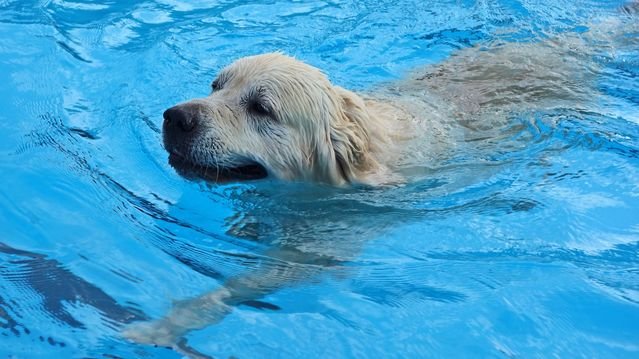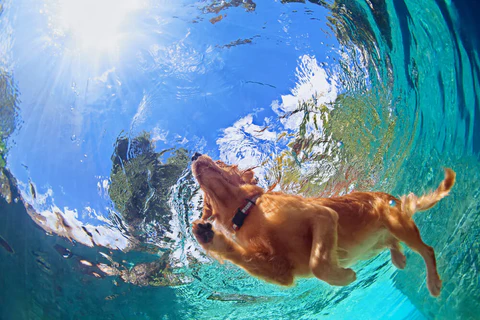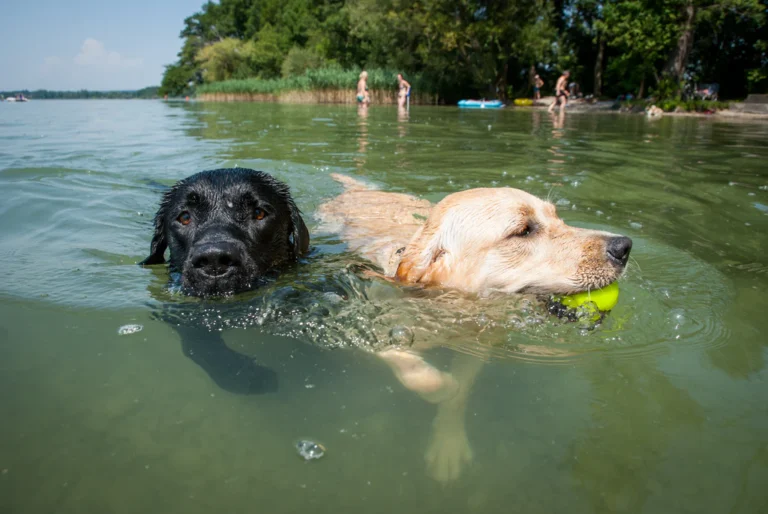
Stay Connected with Us!
Join our communities for the latest updates, tips and earning opportunities:
Introduction to Dog Swimming
Swimming is not only a fun activity for dogs but also one that offers numerous benefits, including physical and mental health improvements. Whether it’s to keep your dog active or help them recover from an injury, swimming can be a great way to exercise your pet in a low-impact way.
Table of Contents
TogglePhysical Benefits of Swimming for Dogs
Dogs benefit physically from swimming because it provides an excellent full-body workout that helps build muscle strength and cardiovascular health. Unlike running or walking, swimming is a low-impact activity, which makes it an ideal exercise for dogs with joint issues, arthritis, or those recovering from surgery. The water’s buoyancy reduces stress on the joints while still giving the muscles a solid workout.
Mental Benefits of Swimming
Beyond physical benefits, swimming also offers mental stimulation for dogs. The water environment presents new sights, sounds, and smells, which can provide excitement and reduce anxiety or boredom. Swimming can be an excellent way to help dogs relieve stress, especially for those who are anxious or hyperactive.

The Role of Swimming in Rehabilitation
Swimming is often used as a rehabilitative exercise for dogs recovering from surgery or injuries. It helps them regain strength and mobility without putting too much strain on their healing bodies. Many veterinarians recommend dogs swimming after orthopedic surgeries, as it promotes circulation and strengthens muscles while maintaining low stress on the joints
Breed-Specific Swimming Abilities
While some dogs are natural swimmers, others might not take to the water as easily. Breeds like Retrievers, Spaniels, Newfoundland Dog and Setters, which have historically been bred to retrieve waterfowl, tend to be strong swimmers. On the other hand, breeds like Bulldogs, Pugs, and Dachshunds, which have shorter snouts or broader chests, may find swimming challenging and require extra care
How to Teach Your Dog to Swim
Introducing your dog to swimming requires patience and the right approach. Start by introducing your dog to water gradually, whether it’s a kiddie pool or a shallow part of a lake or beach. Use toys and treats to make the experience positive and exciting. For dogs that seem fearful, ensure they feel safe and encourage them with calm praise.
Safety Tips for Dog Swimming
Safety should always come first. Supervision is crucial, especially for dogs that are new to swimming or may not be naturally strong swimmers. Always use a dog life vest, especially for breeds that may struggle in the water. Even strong swimmers can benefit from a life vest, particularly when swimming in unfamiliar areas like lakes or the ocean. Additionally, make sure the water temperature is safe—too cold or too hot water can lead to serious health problems, such as hypothermia.

Choosing the Right Dog Swimming Location
The environment in which you allow your dog to swim matters. Choose calm, shallow areas with a gradual slope, so your dog can enter and exit the water easily. Avoid areas with strong currents or waves, especially if your dog is still learning to swim. It’s also important to check the water for hazards such as sharp objects, toxic algae, or fishing hooks.
Monitor Your Dog’s Well-Being After Swimming
After swimming, rinse your dog off with fresh water to remove chlorine, saltwater, or any contaminants from their fur. Make sure to dry their ears thoroughly, as moisture can lead to ear infections, particularly in dogs with floppy ears. Also, keep an eye on your dog’s energy level and behavior—if they seem overly tired or show signs of distress, it might be a sign they’ve overexerted themselves.
Swimming as a Bonding Activity
Swimming can serve as a fantastic bonding experience between you and your dog. Spending time together in the water creates positive associations, which can strengthen your relationship. Plus, when your dog sees you enjoying the water, they may feel more confident and willing to engage. This shared experience can build trust and help your dog feel more comfortable in unfamiliar situations.
When Swimming Isn’t Right for Your Dog
While swimming offers many benefits, it’s not for every dog. Some dogs simply don’t enjoy the water, or they may feel too anxious around it. Forcing your dog to swim can create negative associations and make them fearful of water in the future. If your dog shows signs of distress, anxiety, or discomfort in the water, it’s best to respect their boundaries and find other activities to keep them active.
Conclusion
Swimming can be an incredibly rewarding activity for dogs, providing them with physical, mental, and emotional benefits. By understanding your dog’s needs and taking safety precautions, you can help ensure they enjoy the water in a positive and healthy way. Whether for rehabilitation or simply fun, swimming is a great way to keep your dog active and engaged.
External References and Resources
- PetMD – How to Teach Your Dog to Swim
- Rover – How to Teach Your Dog to Swim
- DogTime –How To Introduce Your Dog To Water
- The Spruce Pets –Dogs and the Pool: What You Need to Know
FAQ's
Can all dogs swim? Not all dogs are natural swimmers. Breeds like Retrievers, Spaniels, and Setters are excellent swimmers due to their history as water dogs, while breeds like Bulldogs, Pugs, and Dachshunds may struggle with swimming due to their body shape and short snouts. It’s important to assess each dog individually and gradually introduce them to water to gauge their comfort level.
Is swimming safe for my dog? Yes, swimming is generally safe for dogs, but it should always be supervised. Dogs should wear life vests in unfamiliar water, and you should ensure that the water temperature is appropriate. Avoid letting your dog swim in fast-moving currents, and keep an eye out for hazards such as sharp objects or blue-green algae.
How can I teach my dog to swim? Start slow and keep the experience positive. Begin with shallow water where your dog can gradually get used to the feeling of the water. Use treats, toys, and plenty of praise to encourage them, and never force them into the water if they seem scared. Patience and positive reinforcement are key.
How long should my dog swim? Keep swimming sessions short, especially for dogs that are new to water. Aim for 10-15 minutes, depending on the dog’s energy level and comfort. Overexertion can lead to fatigue or stress, so always monitor your dog’s behavior and stop if they seem tired.
What should I do after my dog swims? After swimming, rinse your dog with fresh water to remove chlorine, salt, or any debris from the water. Dry their ears carefully, as moisture can lead to ear infections, and keep an eye out for any signs of irritation or discomfort. A good rinse can also help remove any harmful substances, such as algae or bacteria.




